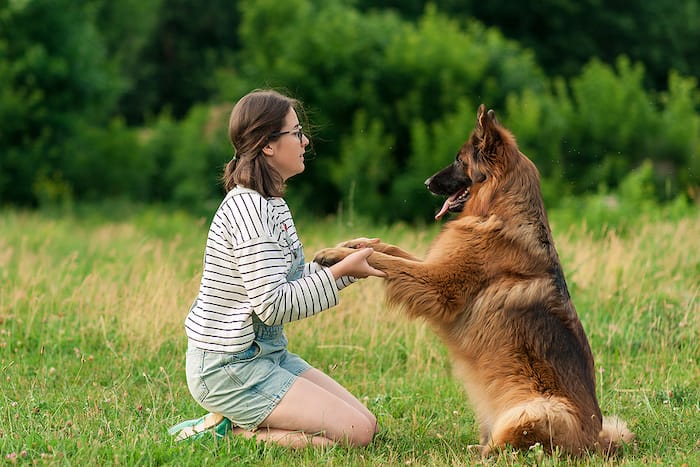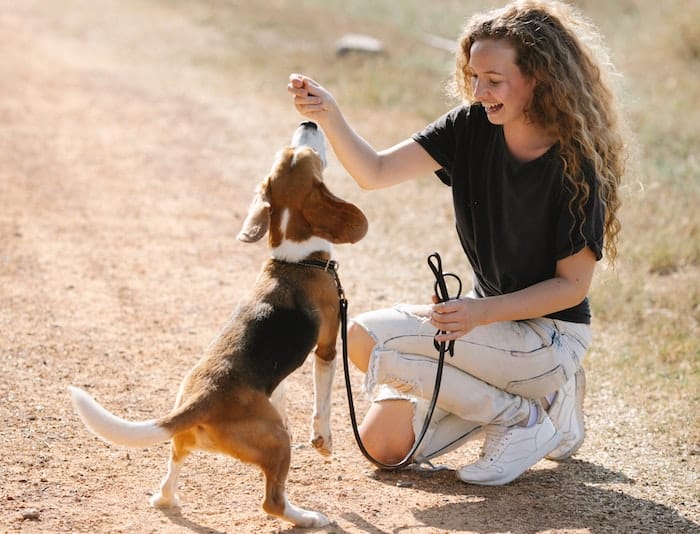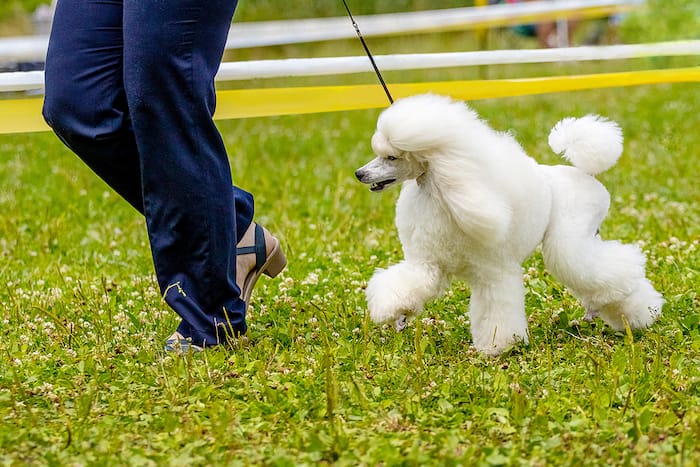Like most dog owners, you probably wish to train your pet yourself without spending money on expensive obedience classes. Well, guess what? You can. There are several ways you can train your dog by yourself, and we’re going to show you how. Follow these simple steps, and you’ll be on your way to a better-behaved pet.
Decide What You Want to Train Your Dog to Do
This will help you determine which methods to use and what kind of commitment you’ll need. For example, if you want your dog to stop barking excessively, you won’t need to put in as much time as you would if you were teaching your dog tricks or obedience commands.
At the same time, be realistic about what you can accomplish independently. Training a dog is time-consuming, so if you’re working full-time and taking care of other obligations, changing your dog’s behavior by yourself may not be feasible. In that case, consider enlisting the help of a professional trainer or behaviorist.
Pick a Training Method
You can train your dog in many different ways, so choosing a method that will work best for you and your pet is crucial. If you’re not sure where to start, here are a few popular methods:
- Positive reinforcement: This is the most common type of dog training, and it involves rewarding your pet for desired behaviors. For example, if you want your dog to sit, you give a treat every time it sits on command.
- Negative reinforcement involves punishing your dog for unwanted behaviors. For example, if your dog jumps on you, you spray with water or say “no” in a stern voice.
- Operant conditioning uses a system of rewards and punishments to shape your dog’s behavior.
Whatever method you choose, be consistent with it, and praise your dog when he exhibits the desired behavior. Dogs respond best to positive reinforcement, so focus on rewarding good behavior rather than punishing bad behavior.
Invest in Dog Training Collars and Leashes
Buying the necessary pet training gear is something you should do before you start training your dog. This includes a collar, leash, and perhaps even a crate. Dog Training Collars are available in various styles, including prong or spike collars, choke chains, remote-controlled electric shock collars, and citronella spray collars. The type of collars you choose will likely depend on your dog’s personality and the behaviors you’re trying to address. For example, prong or spike collars are often used for dogs who pull on the leash since they provide a gentle but effective way to correct the behavior.
On the other hand, Choke chains should only be used by experienced dog trainers since they can be misused and cause injury. Regarding leashes, you’ll also have a few different options. The most common type is a standard 6-foot leash, but you may also want to consider a retractable leash, which can be helpful if you’re dealing with a dog who likes to wander.
Create a Training Plan
Start by setting aside a few minutes each day for training, and gradually increase the time as you and your pet get more comfortable with the process. It’s also important to be consistent with your commands and rewards.
For example, if you’re teaching your dog to sit, always use the same word or phrase, such as “sit” or “sitting,” and give him a treat every time he does it. This will help him understand what you’re asking him to do and associate the desired behavior with a positive reward.
Finally, don’t get discouraged if your dog doesn’t seem to be progressing as quickly as you’d like. Training takes time and patience, so keep at it; eventually, you’ll see results.
Enlist the Help of a Friend or Family Member
This can be helpful in several ways, such as giving you a break when you need it or providing another set of eyes to help you spot when your dog is exhibiting the desired behavior.
If you don’t have anyone to help you, consider hiring a professional trainer or behaviorist. This may be especially helpful if you’re dealing with a more serious behavior issue, such as aggression or separation anxiety.
To make their engagement with the pet seamless, ensure that the pet is comfortable with whoever you bring to assist with training. An excellent way to do this is to have the helper play with the pet before starting any training sessions. This will help the pet associate the helper with positive experiences, making it more likely that he’ll respond well to training.
Practice and Generalize the Behavior
Once you’ve taught your dog the desired behavior, it’s essential to practice it often so that he can generalize it to different people, places, and situations. For example, if you’ve taught your dog to sit, practice it in different rooms of your house, around different people, and in different outdoor locations.
This will help him understand that the behavior is expected of him no matter where he is or who he’s with. Be sure to also practice behaviors that are opposites of the ones you want your dog to exhibit. For example, if you’re teaching your dog not to jump on people, practice having him sit or lie down when someone approaches. This will help him understand that the desired behavior is to remain calm and not jump up.
Be Patient
Training takes time and patience, so keep going even if your dog isn’t progressing as quickly as you’d like. Just keep at it, and eventually, you’ll see results. If you need help, consider enlisting the assistance of a friend or family member or hiring a professional trainer or behaviorist.
Remember, even if your dog never masters all the behaviors you want, he can still be a loving and loyal companion. Just enjoy the time you spend with him and appreciate his progress, no matter how small.
There’s a lot to consider when choosing the right dog training gear. But don’t worry, you don’t have to do it all at once. Just start with the basics and build from there. Remember to trust the process and be patient.



